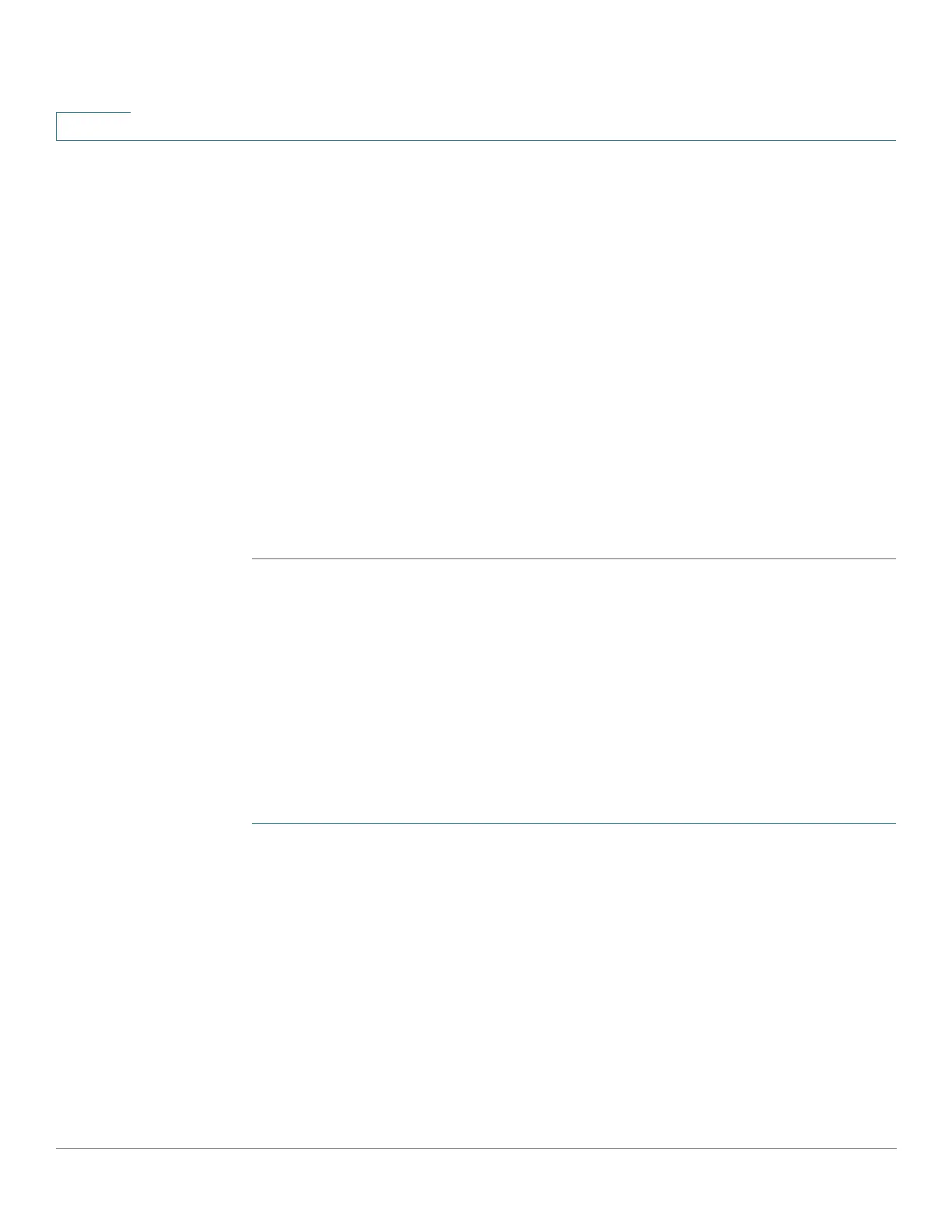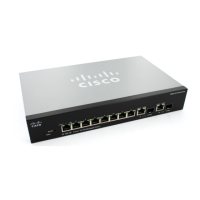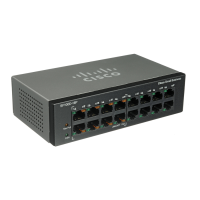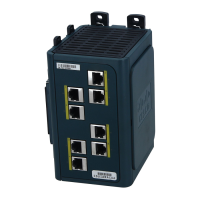VLAN Management
VLAN Groups
210 Cisco Small Business 200, 300 and 500 Series Managed Switch Administration Guide (Internal Version)
13
• Encapsulation—Protocol Packet type. The following options are available:
- Ethernet V2—If this is selected, select the Ethernet Type.
- LLC-SNAP (rfc1042)—If this is selected, enter the Protocol Value.
- LLC—If this is selected, select the DSAP-SSAP Values.
• Ethernet Type—Select the Ethernet type for Ethernet V2 encapsulation. This
is the two-octet field in the Ethernet frame used to indicate which protocol is
encapsulated in the payload of the Ethernet packet) for the VLAN group
• Protocol Value—Enter the protocol for LLC-SNAP (rfc 1042)encapsulation.
• DSAP-SSAP—Enter these values for LLC encapsulation.
• Group ID—Enter a protocol group ID.
STEP 4 Click Apply. The Protocol Group is added, and written to the Running
Configuration file.
Protocol-Based Groups to VLAN Mapping
To map a protocol group to a port, the port must be in General mode and not have
DVA configured on it (see Configuring VLAN Interface Settings).
Several groups can be bound to a single port, with each port being associated to
its own VLAN.
It is possible to map several groups to a single VLAN as well.
To map the protocol port to a VLAN:
STEP 1 Click VLAN Management > VLAN Groups > Protocol-Based Groups to VLAN.
The currently-defined mappings are displayed.
STEP 2 To associate an interface with a protocol-based group and VLAN, click Add.
STEP 3 Enter the following fields.
• Interface—Port or LAG number assigned to VLAN according to protocol-
based group.
• Group ID—Protocol group ID.
• VLAN ID—Attaches the interface to a user-defined VLAN ID.

